When Schenectady was a sleepy backwater, having numerous trains go across the main business street, just feet from the Erie Canal, was probably not much more than a nuisance. But with the growth of the American Locomotive Works, and the opening of the Edison Works in 1886, a serious boom began. Schenectady’s population went from 13,655 in 1880 to 19,902 in 1890. It soared to 31,682 in 1900. By 1910, it would more than double again, to 72,826. And nearly all those people had to cross railroad tracks to get where they had to go every day. Accidents at the crossings were common and often fatal. Eventually a plan emerged to raise the tracks.
The work of eliminating the most dangerous grade crossings started around 1904, and was complete by 1908. In 1906, the publisher of the Canajoharie Radii recounted his earlier life in Schenectady, and how fortunate he felt to have left the city with both his legs:
“Inasmuch as the proprietor of the Radii was born in ‘Old Dorp,’ and resided on State street, it became necessary for him, during his apprenticeship in the office of the Schenectady Reflector, to cross and recross the railroad tracks on that street several times daily, but fortunately he left that city before his rheumatic days and the four-track period, thereby escaping the perils of that improved death trap, and is now pleased to state that he is still on the face of the earth, consequently we can heartily endorse the following from the Amsterdam Evening Recorder:
‘The old State street grade crossing at Schenectady, one of the most dangerous spots of its kind between Albany and Buffalo, is now entirely a thing of the past. It is due to the New York Central road, to say that in doing away with this nuisance it has made a complete job of it.’”
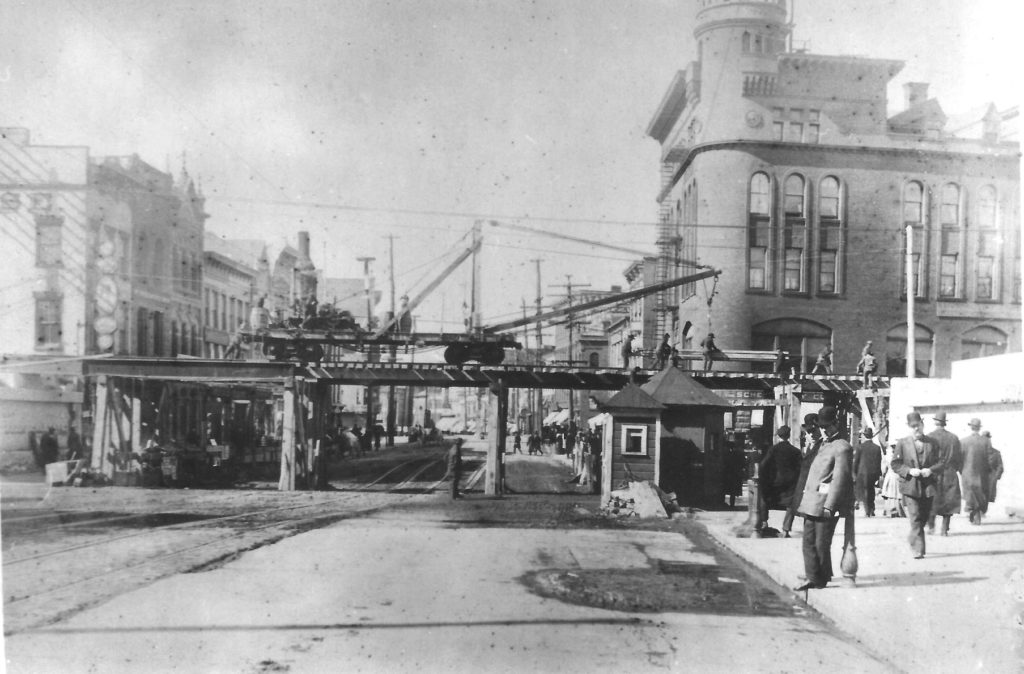
Back in 1961, Gazette columnist Larry Hart related how the city looked in 1903, when the city and its suburbs were served by a network of electric trolley lines:
“The streets were still paved with block stone in 1903 and overhead was a maze of wires strung in profusion from utility poles at curbsides. The copper ‘witches’ brooms’ of the street car companies were like glittering cobwebs over many of the city’s main thoroughfares.
The New York Central and Delaware & Hudson Railroad trains still chugged over the grade level crossing alongside the Gazette building. Despite the vigilance of crossing guards, people and horses were killed regularly each year at the State street and Liberty street crossings. The present overhead railroad crossings were started in March, 1905, and completed toward the latter part of 1907.”
In fact, overall work on eliminating a whole series of grade crossings had begun in 1904, and was part of a takeover of the Schenectady Railway Company, the trolley system originally created by General Electric, by the Delaware and Hudson and New York Central Railroads, which became official in February 1905. (It would be a little later that year that the D&H would acquire Albany’s United Traction Company.)
“In connection with the sale the announcement was made this week that the plans for a new passenger station for the New York Central are completed. The plans call for an imposing structure, well in keeping with the importance this station has attained along the line of the railroad; also that as a part of the big deal, the common center for the trolley traffic will be transferred from the present waiting room in State street to a point beneath the raised tracks of the steam railroad, between State and Union streets.
The details of the latter scheme will be carried out in connection with the grade crossing improvements, to be resumed as soon as the weather will permit, and they will undoubtedly prove to be the most important transportation move that Schenectady has experienced in many years.”
“
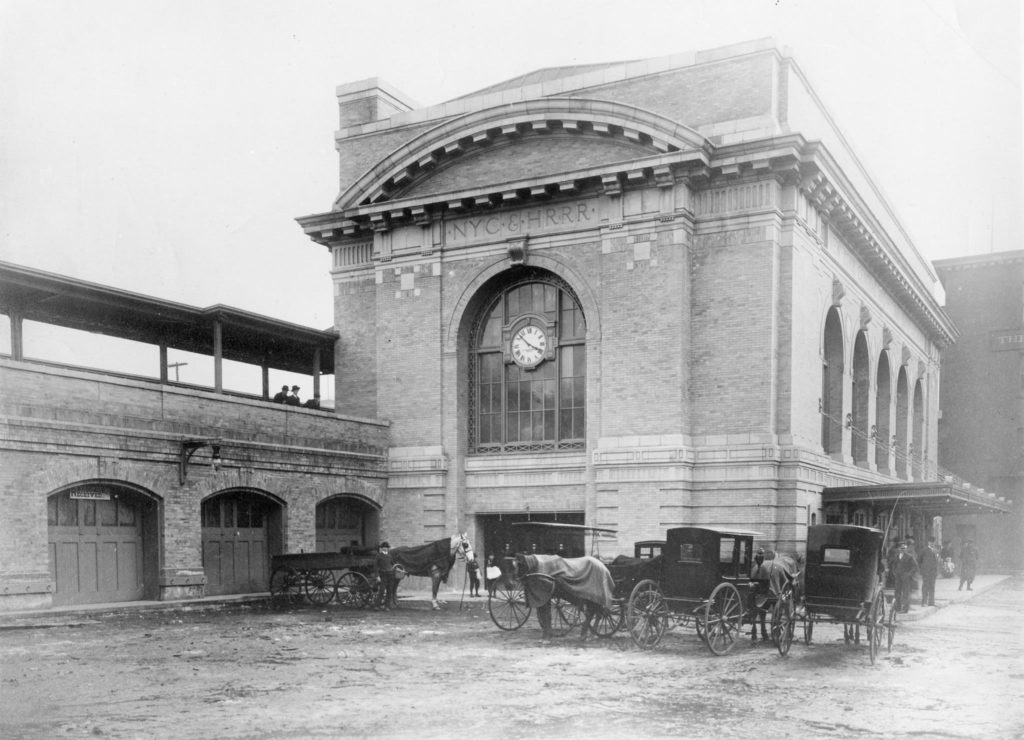
The whole thing was supposed to result in trolley loops beneath the raised tracks; then trolley passengers would be able to board in front of the to-be-built New York Central station, replacing the trolley waiting room on State Street. Despite common ownership between the steam and electric roads, that never came to fruition; it may simply have been a matter of cost for relocating trolley tracks. We wonder if the doors under the tracks that were used by companies like American Express and Railway Express Agency for parcel shipping were originally intended to be part of the proposed trolley loops. (A number of us were recently remembering how REA trucks loading in the doors underneath the overpass would frequently block Liberty Street.)
The Brooklyn Daily Eagle reported that the Schenectady steam track elevation would cost $1.28 million, with the State of New York paying one quarter; the final numbers were higher. “It provides for the doing away with grade crossings of both railroads on Westinghouse and Edison avenues, and State, Liberty and Union streets, and with New York Central crossings on Greene, Front, River and Glen streets and Delaware and Hudson crossings on North Center, Warren and Fonda streets. This takes in the whole city, one of the most rapidly growing cities in the Union, with a population at present of 75,000.” A slight overstatement, but not much.
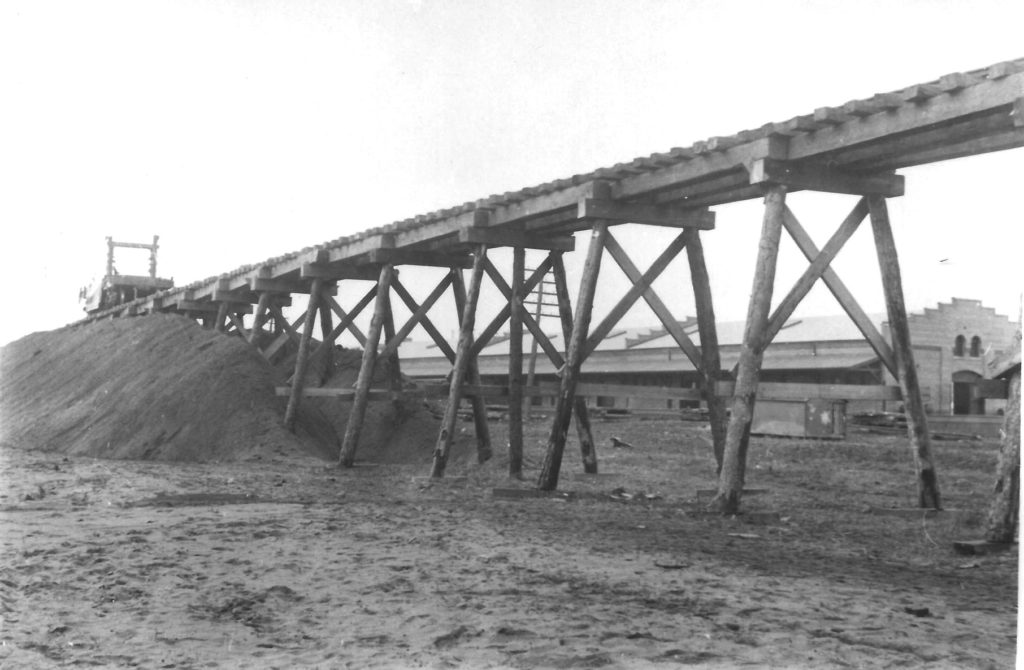
The work was of course complex. If you know that landmark bridge that carries the railroad tracks across Erie Boulevard just north of Union Street, then you also know the bridge that carried the railroad across the Erie Canal. As the tracks were raised up, the bridge had to be raised as well. In March 1905 the Fulton County Republican reported:
“All traffic on the canal bridge of the New York Central railroad company at Union street, Schenectady, is now over the two tracks on the west side of the structure. The two on the east side have been abandoned and have been partially removed in the process of raising the bridge crossing for the grade crossing and track elevation. To accomplish this engineering feat of raising the bridge without checking traffic an immense stationary derrick is being erected. A stationary engine is already in place to operate the machine. Most of the grade crossing work now centres at this point, though some sand is dumped each day about the trestling south of State street. This trestling will be advanced to State street as soon as it is needed there. When spring opens the erection of the big retaining walls will be started.”
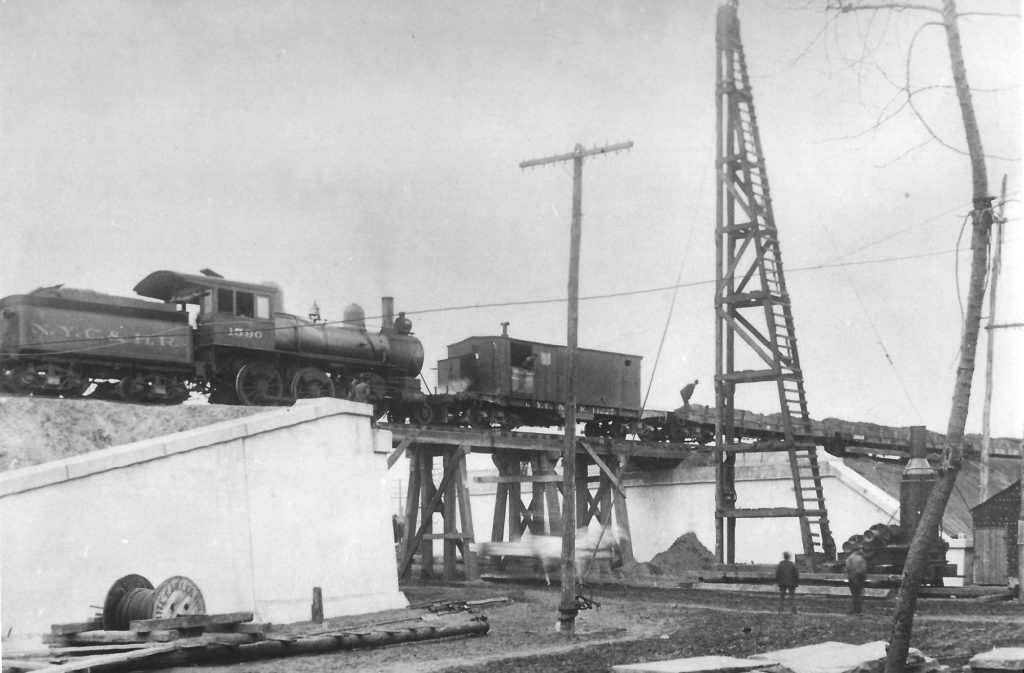
At State Street, the tracks were raised and the street was lowered. There was danger even as the crossings were being eliminated — in December 1904, a workman lost his legs below the knees (and may have died later from his injuries) when he was carrying cement near the tracks when he fell and had his legs run over by the east bound milk train.
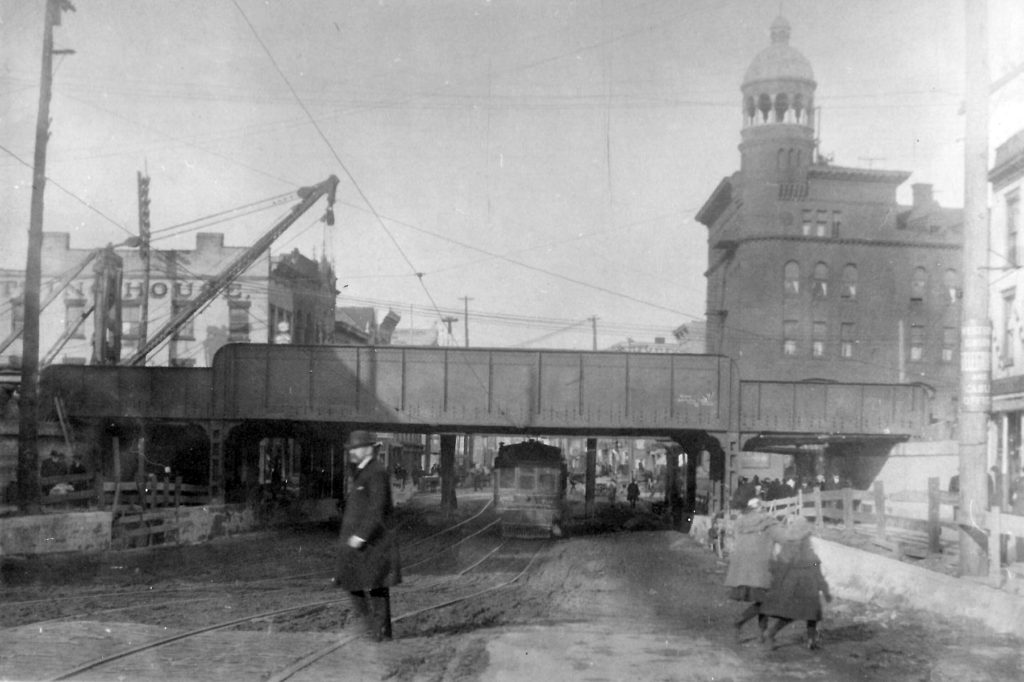
There already was a small New York Central depot on the site, but it was not considered a sufficient station for a city of the importance of Schenectady, and so a new station was also part of the plans. Estimated at half a million dollars (neighborhood of $13 million today), the station opened with a charity ball on February 21, 1908, as reported in The Homer Republican, one of many papers across the state that reported the event:
“The new half million dollar station of the New York Central in Schenectady, said to be the handsomest along the line between New York and Buffalo, was opened with a charity ball, under the auspices of the Schenectady Press club. The event also marked the complete elimination of grade crossings in Schenectady. The attendance was 1,000, and guests were present not only from Schenectady but from Albany, Troy, Amsterdam, Johnstown, Gloversville, Saratoga, Ballston Spa, Cohoes and Watervliet. A score of high officials of the New York Central were also present. There are 23,000 square feet of floor space in the station, and there was no crowding. Refreshments prepared in one of the New York Central’s kitchen cars were served in the express room at the rear. The baggage room was used for card games and the main waiting room for dancing. The dance orders were in the form of coupon railroad tickets. Uniformed attendants were at the doors. The proceeds of the ball will be divided among four local charitable institutions.”
The charities were the Ellis Hospital, Old Ladies’ Home, Day Nursery and the Children’s Home. The tickets/dance programs were clever, incorporating imaginary intercity trips into the dance program: “The ticket has attached coupons each good for a dance via the ‘Charitable and Philanthropic Railroad to the Wells of Elysium, Fount of Ponce De Leon.’ The evening will begin with a two-step from Schenectady to Amsterdam, starting at 9:10 from the former city and arriving at Amsterdam at 9:18 p.m. The last number on the order is from Syracuse to Schenectady on the return trip, leaving Syracuse at 12:50 a.m. and arriving at Schenectady at 12:55 a.m.”
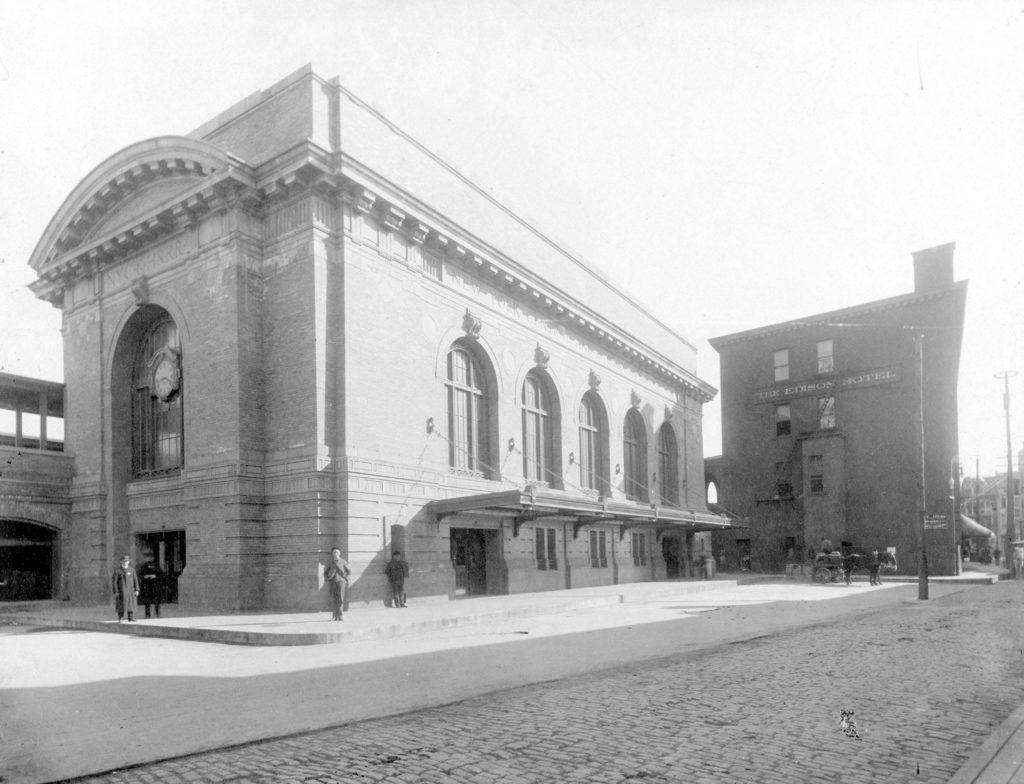
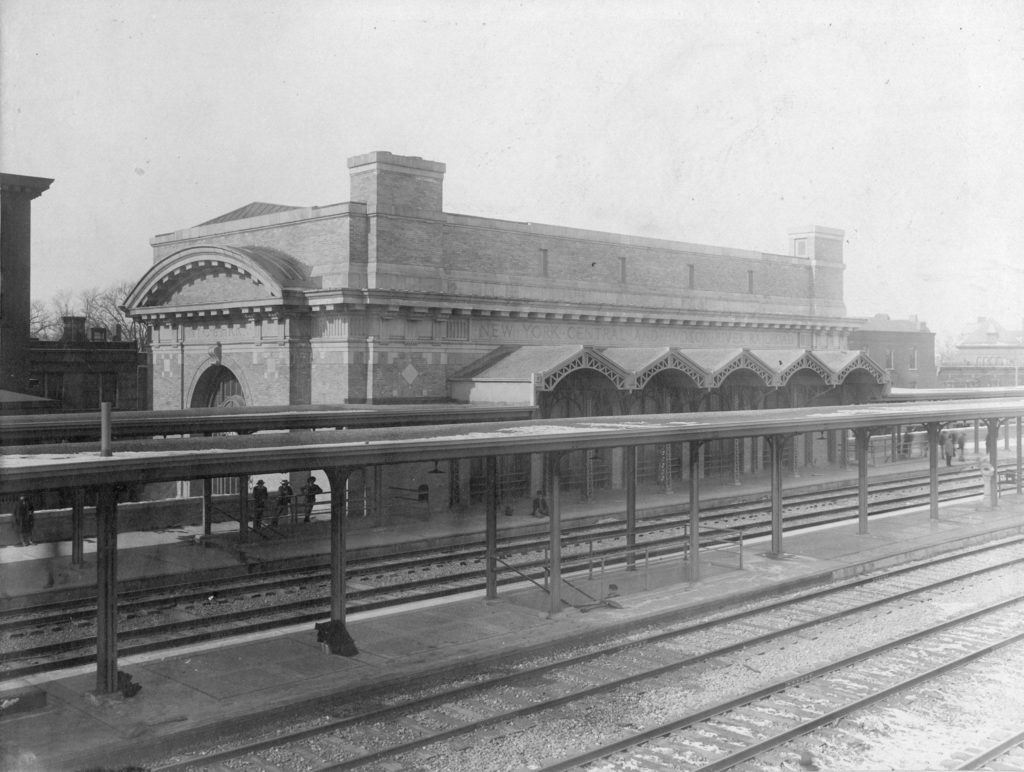
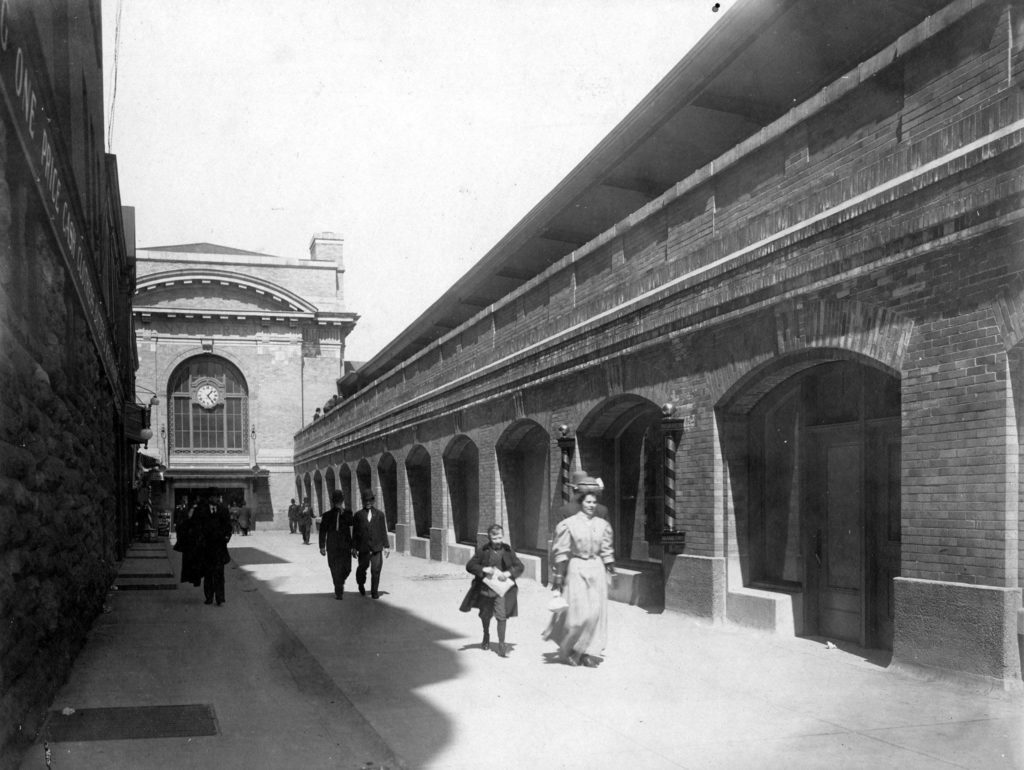
It was a grand opening, and for the next 61 years the station was central to the city. Visitors came through the station; soldiers left through it. But in time, of course, rail travel declined precipitously, and the station declined with it. Union Station was in service until June 28, 1969, when the general collapse of the railroad industry, and of Penn Central in particular (which had only just come into being the year previous, in a merger of the Pennsylvania and New York Central railroads), caused the closure of the Schenectady station. It was “replaced” by a shack on Karner Road, which isn’t exactly (or nearly) Schenectady. (Seriously, 1970s thought leaders: public transportation that you have to drive to get to isn’t public transportation.) The old station was subject to various plans that failed to come to fruition because of the economic realities of keeping an enormous, unmodernized building in service. But where Albany’s Union Station, closed at the same time, fell into the benign, neglectful hands of state bureaucracy — and therefore survived until someone found a new use for it — in Schenectady, someone was more aggressive, and the station was torn down for parking in 1971.
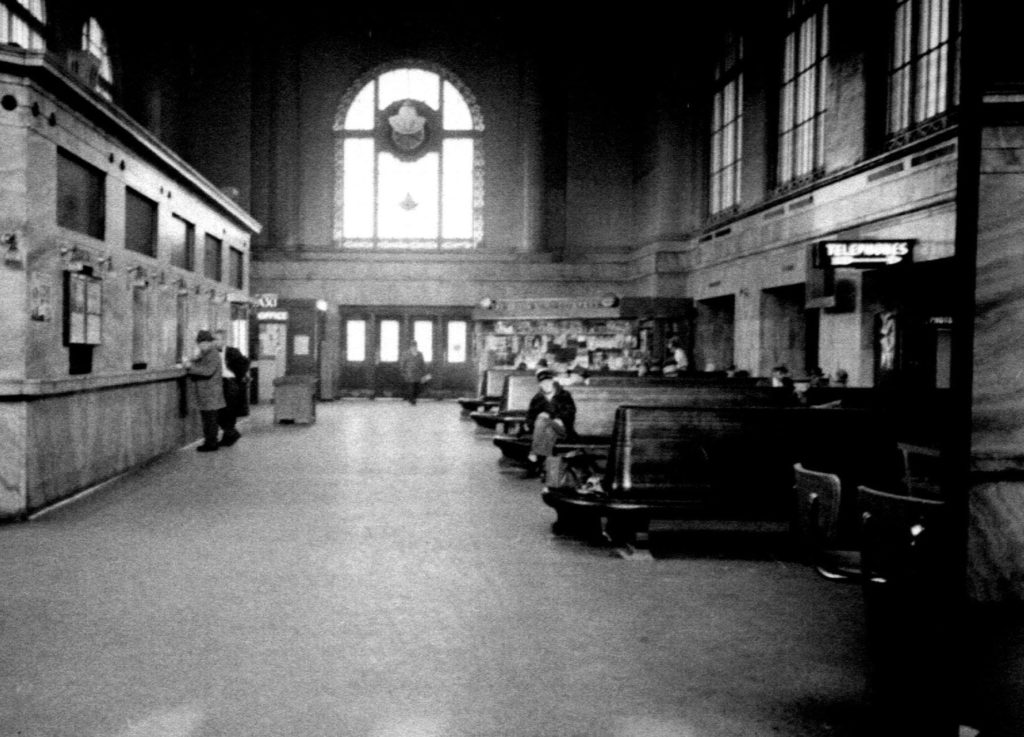
A new station — hardly more glamorous than the Karner shack — was built against the tracks and opened in 1979, returning passenger service to Schenectady. It was basically a dry space with a ticket window, with the charm of a parking garage staircase. Then, in October 2018, after nearly 50 years, Schenectady had a train station again.
The photographs of the grade crossing elimination work were shared in the Schenectady History – Photos and Discussions Facebook group by Gloria DeNice. Other photos were provided by Paul Garrow.

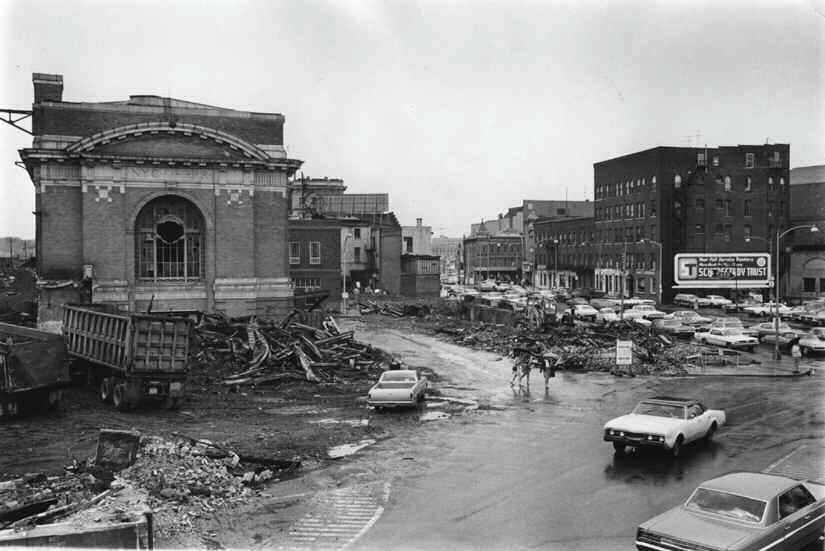
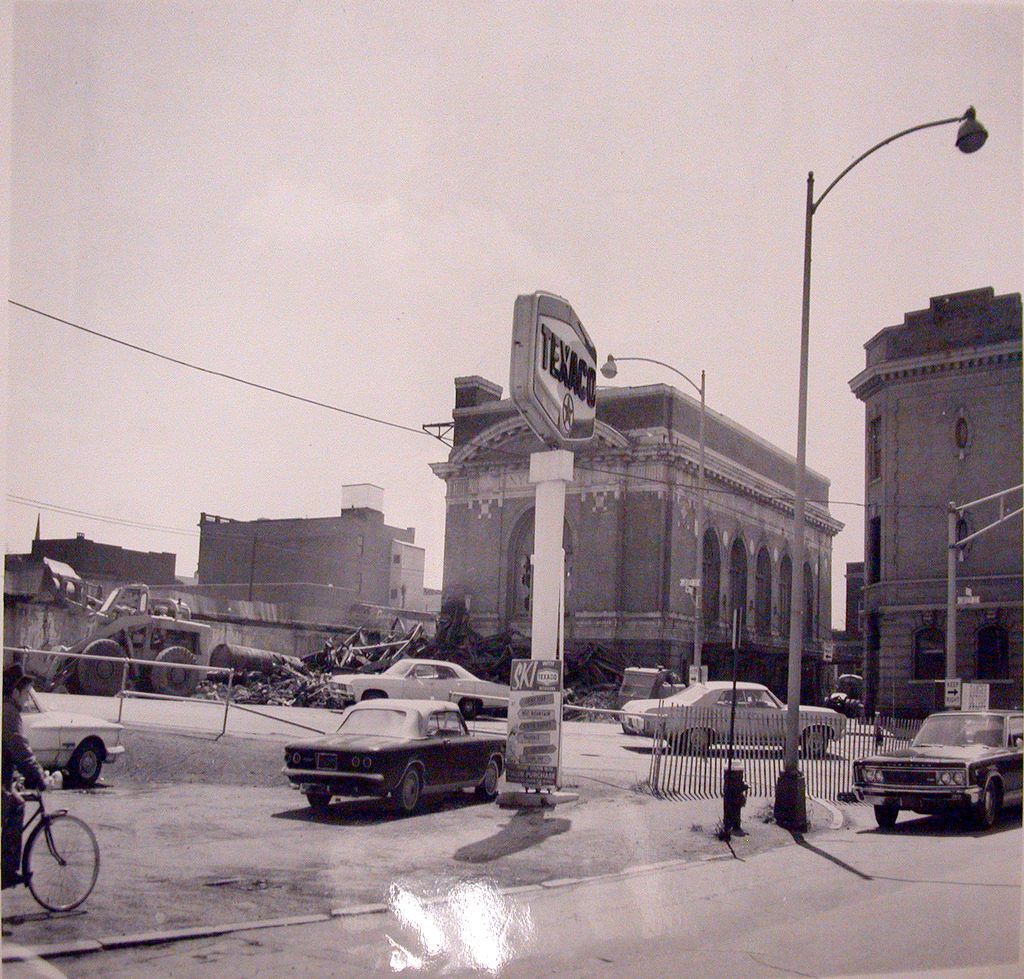
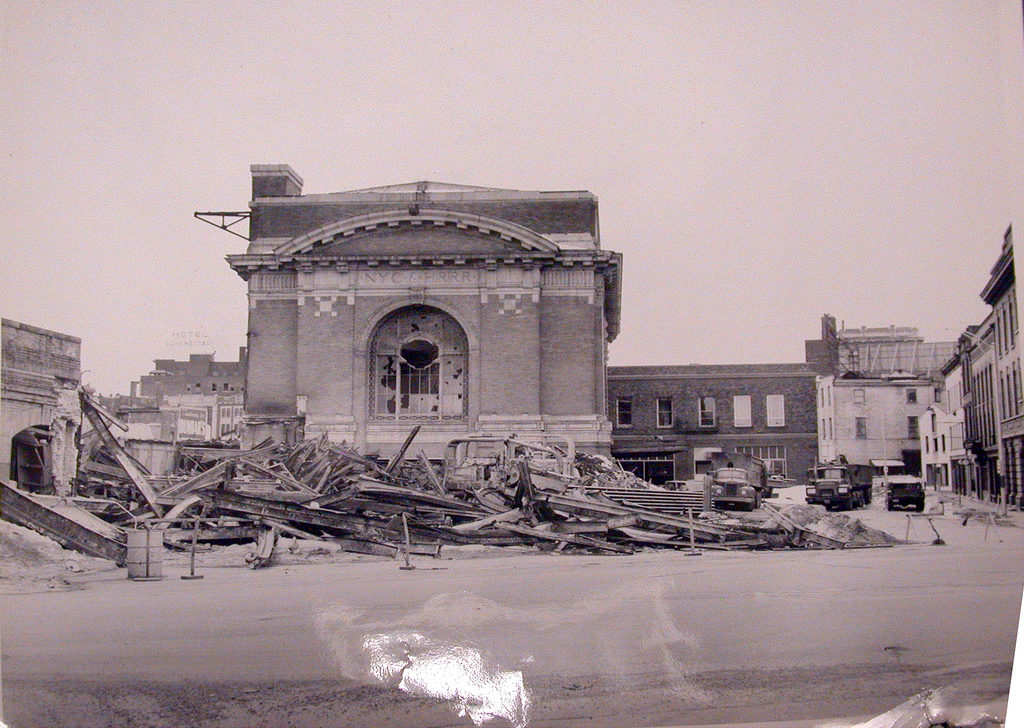
Leave a Reply